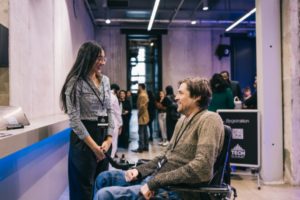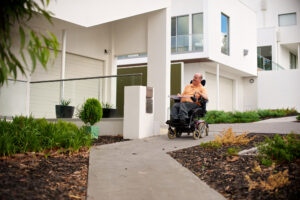In April 2022, the Australian Government and the National Disability Insurance Agency (NDIA) announced new and significant changes to NDIS home and living supports, to improve the experience for participants.
Minister for the NDIS, Senator the Hon Linda Reynolds CSC said that the changes were developed in consultation with participants and providers.
“I have listened to participants and providers and, after extensive engagement with the disability sector, we have identified short and medium-term improvements that will improve the home and living experience for participants and providers,” Minister Reynolds said.
“These changes will reduce red tape, and remove a number of practical and administrative concerns participants and providers have raised, to ensure it’s easier for participants to access home and living supports.”
Supported Independent Living Improvements
‘Making SIL Better’ is a commitment from the NDIA to improve how they deliver Supported Independent Living (SIL) supports to participants.
The improvements include:
- Simplifying claiming processes – introducing a simplified weekly claiming process that would make it easier for participants to negotiate directly with providers about how their supports are delivered and reduce administrative burden.
- Transition approaches – introducing clear and transparent transition or step down processes for managing material changes to SIL support needs to allow a transition period to new levels of support.
- Unplanned exits payment – introducing a new SIL payment to providers for limited circumstances where a participant unexpectedly leaves shared accommodation.
In addition, the NDIA is looking to the future and working with SIL providers to explore, test and inform innovative models of service delivery through Home and Living demonstration projects.
This innovative approach is aimed at bringing together participants and providers to design and deliver contemporary ways for participants to pursue their Home and Living goals. MOUs for the Round 1 projects are soon to be finalised with projects expected to be implemented from April 2022.
Home and Living Decisions
The Government is committed to the quickest possible pathway to make home and living decisions that respect a participant’s individual circumstances and often complex needs.
Consequently, the NDIA will implement specific improvements to the consistency and timeliness of home and living decisions for participants.
“As part of this commitment, the NDIA will commence publishing metrics specific to home and living decisions.”
“The NDIA will also provide a point of contact to explain home and living funding decisions which will provide greater clarity for participants,” Minister Reynolds said.
This is consistent with the Government’s response to the recommendations of the 2019 Tune Review to implement a Participant Service Guarantee which commits, and reports on, timeframes for participant engagement with the NDIA.
The Commonwealth commits to continuing to work with states and territories through the Disability Reform Ministers Meeting, and in partnership with state and territory housing ministers, to ensure the appropriate supply of housing is available to all people with disability, noting their primary responsibility for housing supports for people with disability.
Clearer Pathways for Individualised Living Options
The NDIA is also establishing clearer information on Individualised Living Options (ILO) for participants and providers.
ILO supports participants to choose the home they live in and set up support in the way that suits them, for example sharing a home with family, friends, partners or housemates, or living with a host.
“The Agency is further developing the ILO pathway over the coming months to help participants with home and living goals in their plan to explore ILO as a potential option,” Minister Reynolds said.
“The Government is committed to ensuring people with disability have the supports they need and the flexibility to choose where and how they want to live. These improvements to the SIL and ILO pathways will help participants pursue their home and living goals.”




